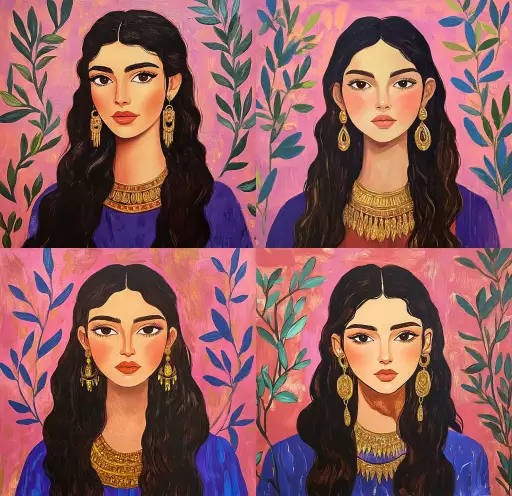Explore the Best AI Image Gallery

Pixels on Skin: How AI Image Generation is Transforming Design
The design landscape is undergoing a seismic shift, driven by the rapid advancements in artificial intelligence (AI), particularly in the realm of image generation. Tools like DALL-E 2, Midjourney, and Stable Diffusion are empowering designers with unprecedented capabilities, blurring the lines between human creativity and machine ingenuity. This revolution presents both exciting opportunities and complex ethical considerations that demand careful examination.
A Canvas Unleashed: The Potential of AI Image Generation in Design
AI image generators offer a plethora of applications for designers across various disciplines:
- Concept Exploration: Designers can rapidly iterate through numerous visual concepts, experimenting with different styles, compositions, and aesthetics to find the perfect fit for their project.
- Personalized Design: AI can generate bespoke designs tailored to individual client preferences, fostering a more personalized and engaging user experience.
- Content Creation at Scale: Generating high-quality visuals for marketing materials, social media posts, websites, and other content needs can be significantly accelerated using AI, freeing up designers time for more strategic tasks.
- Prototyping and Visualization: Architects, product designers, and engineers can leverage AI to create realistic renderings and 3D models, streamlining the design and development process.
Navigating the Ethical Landscape
While the potential of AI image generation is undeniable, its crucial to address the ethical implications that accompany this technology:
- Copyright and Ownership: Questions arise regarding the ownership of AI-generated artwork. Who holds the copyright—the user who provides the prompt, the developer of the AI tool, or the AI itself?
- Bias and Representation: AI models are trained on vast datasets, which may contain inherent biases that reflect societal stereotypes. This can result in AI-generated images perpetuating harmful representations.
- Job Displacement: The automation capabilities of AI raise concerns about the potential displacement of human designers, particularly in tasks involving repetitive or formulaic design work.
Shaping the Future: Responsible Innovation and Collaboration
As AI image generation continues to evolve, its essential to foster responsible innovation and ethical development:
- Transparency and Explainability:** Making AI algorithms more transparent and understandable can help address concerns about bias and build trust in the technology.
- Human-in-the-Loop Design: Integrating human oversight and creativity into the design process can ensure that AI tools augment, rather than replace, human designers.
- Education and Training:** Equipping designers with the skills and knowledge to effectively utilize AI tools is crucial for maximizing their potential while mitigating risks.
Conclusion
AI image generation is poised to revolutionize the design industry, empowering creators with new possibilities and transforming the way we interact with visual content. By embracing ethical considerations, fostering collaboration between humans and machines, and prioritizing responsible innovation, we can harness the power of AI to unlock a future where creativity knows no bounds.






](https://images.ai-img.art/thumbnails/150/bddf3ae4a232290858389b933c866ad3be429ef2e25c23a9f4d7713ed6e44d0b.webp)


](https://images.ai-img.art/thumbnails/150/f67d9af3398150f2ab1bcf250717fea134275e2ca896252b54a4d9bb3719f9ac.webp)
](https://images.ai-img.art/thumbnails/150/008b5d5d49667cc2e93a5f8a8adfaa545963da99c39ff0901f5296294636400d.webp)









](https://images.ai-img.art/thumbnails/150/c2c9c48b38fae37f0a457b80b084ed01ba803810fc8f488c8f610c03abc74049.webp)














](https://images.ai-img.art/thumbnails/150/4289d1230b86a96c4d556636c3167bed0ef38f850826549517e4e45db4d87bf7.webp)





](https://images.ai-img.art/thumbnails/150/f9584153b4cddd8c9fab611dc10247549b275c59bc173251e37d0935874f9deb.webp)